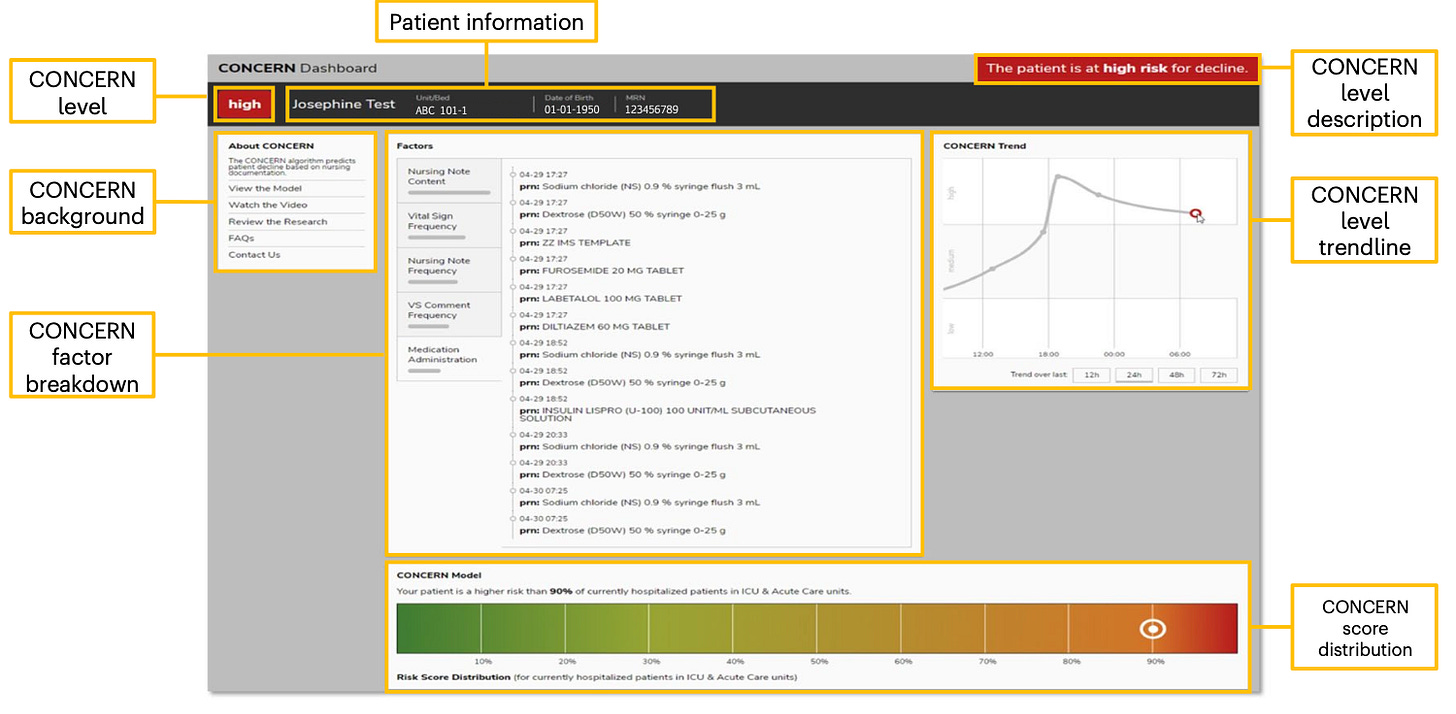Good Reasons For CONCERN?
It's a EWS that snoops on your progress notes.
In theory, this is an idea I like.
So-called “early warning systems” can be non-specific, are dependent on intermittent assessments and manual data collection, and suffer from false-positives and false-negatives. It is difficult to measure the entirety of effect on clinical care from EWS, as well as from “rapid response team” activation, but it is probably a net positive – a net positive that would benefit from continued refinement.
One way to capture a more nuanced view of patient status would be to expand the data sources utilized – and we’ve seen probable success demonstrated by Kaiser. The approach detailed in this study looks a bit different – trying to glean additional data from human impressions of patient trajectory by looking into nursing notes and aspects of care delivery.
Specifically, they use these model factors and features:
And the interface looks like:
In the publication, the authors report increased unplanned transfers to ICU, improved in-hospital mortality, and decreased hospital length-of-stay, among others outcomes. It’s a bit precarious to take their findings at face value, in part due to financial and professional conflicts of interest, and in part due to study design decisions.
The authors randomized use of CONCERN to the unit level, and patients can quite obviously move between units during their hospital stay – an effect which ought to have moderated the reported 35%(!) reduced risk of death. Then, there were widespread baseline differences between patients starting their journey in the “intervention” and “usual care” arms, favoring the intervention. The topline results will be directly affected by whether these differences can be adequately adjusted. Lastly, there is no information here regarding differences in clinician actions based on various CONCERN trajectories. A prognostic model does not change outcomes – actions do. There needs to be better documentation of actual effects on clinical care in order to accept the internal validity of the outcomes reported.
But, overall, I generally appreciate the idea of expanding the scope of factors incorporated into risk-prediction models. Substantial external validation and evaluation would be necessary to deploy this model.


